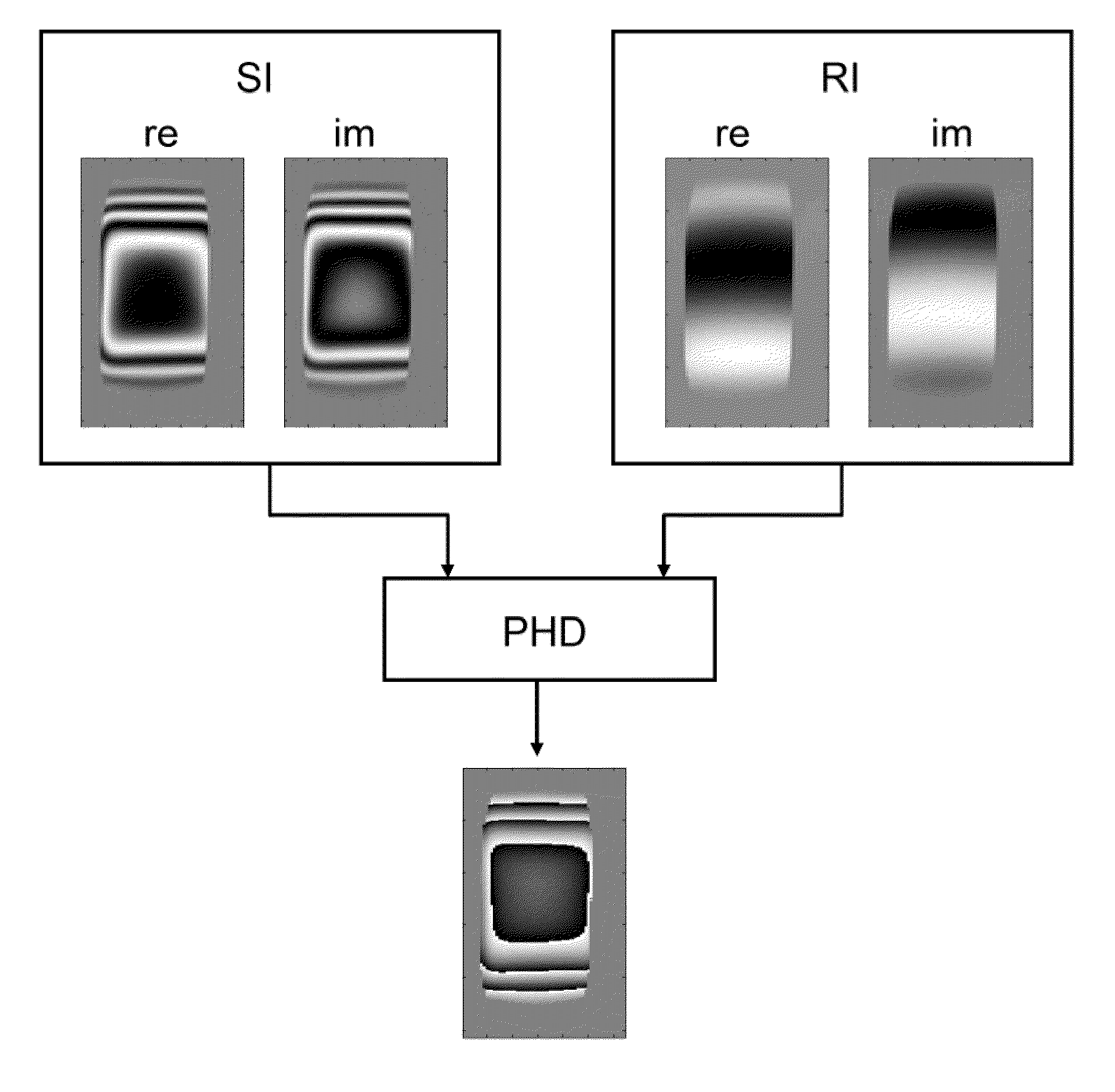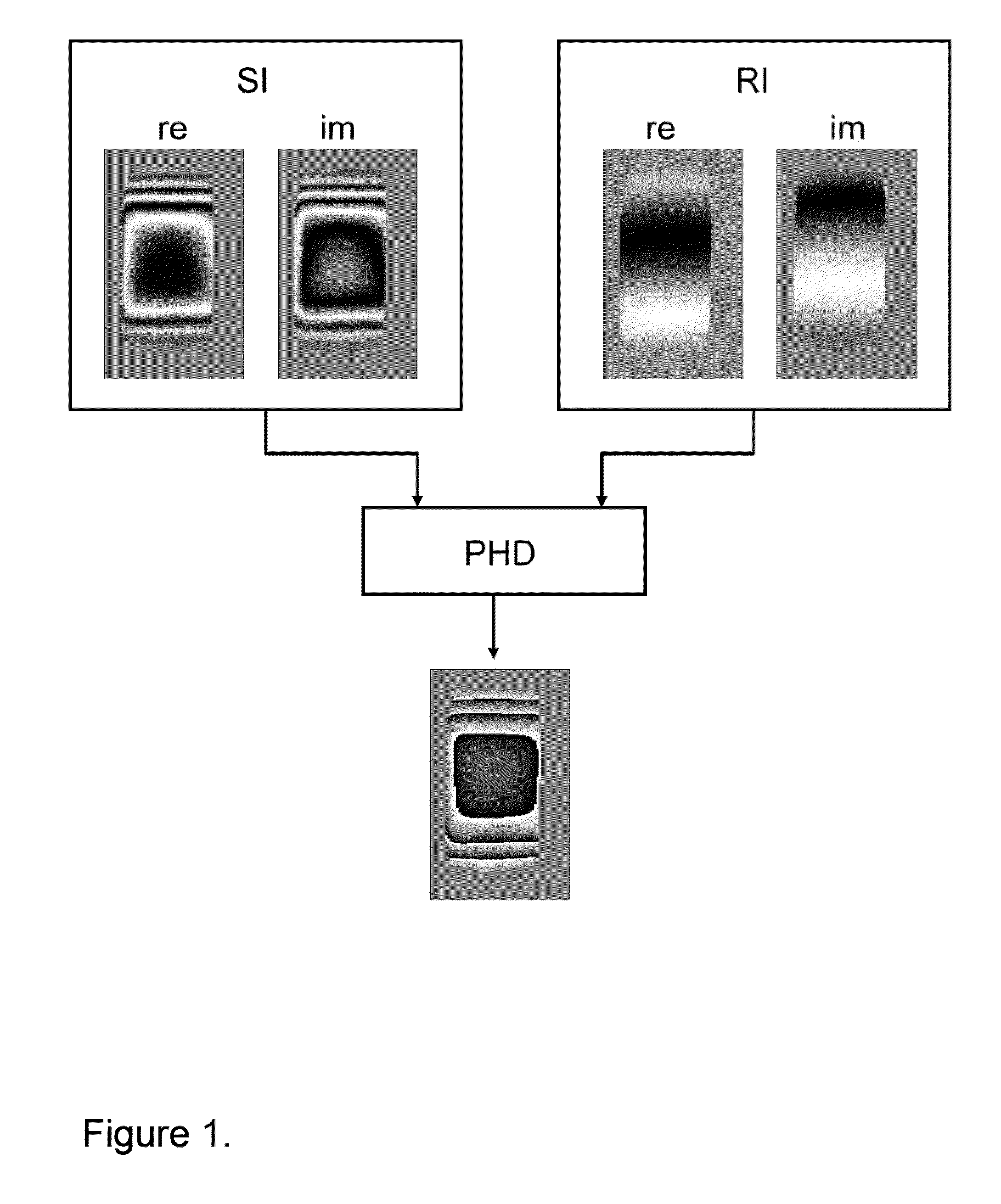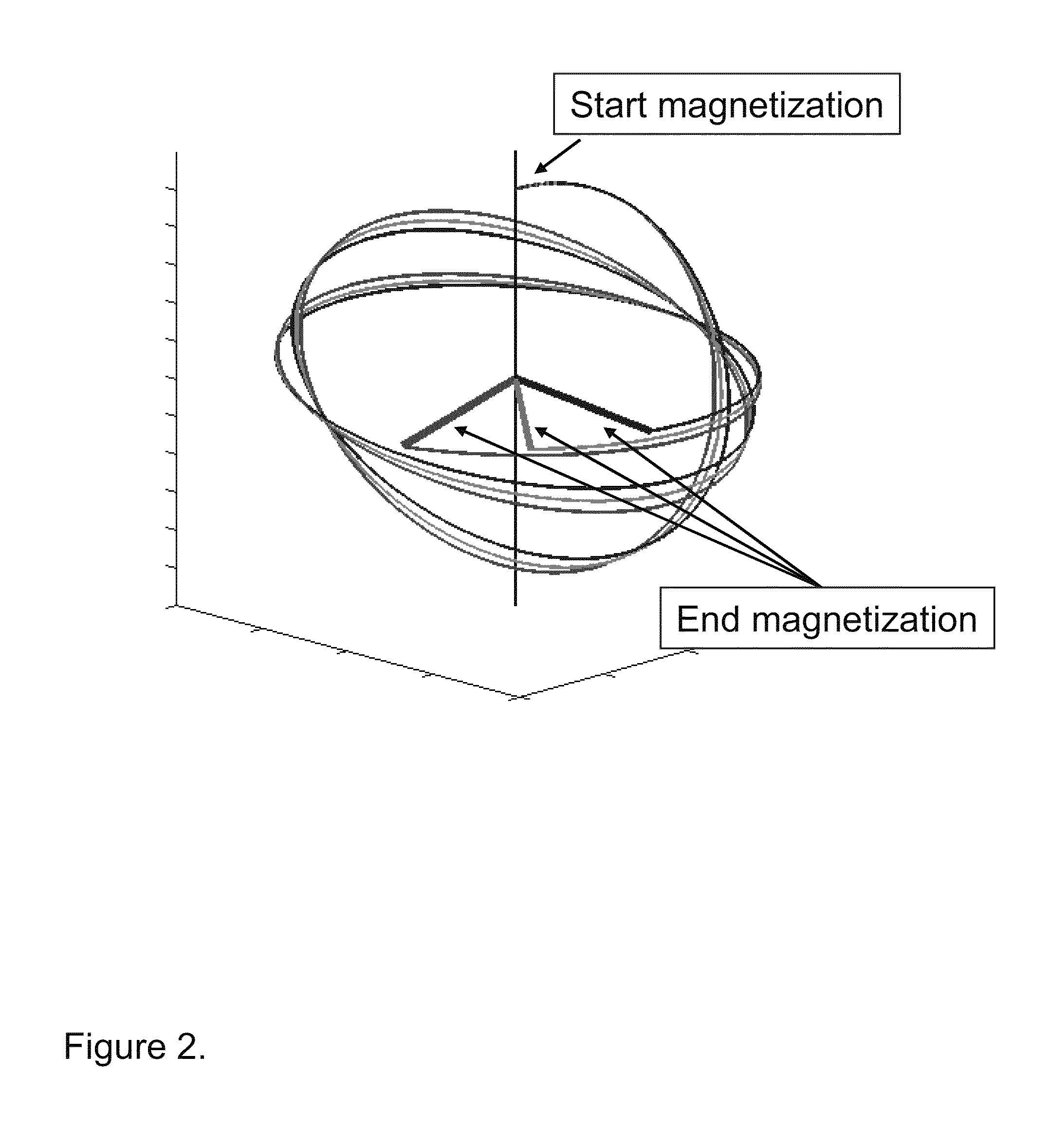Method for mapping of the radio frequency field amplitude in a magnetic resonance imaging system using adiabatic excitation pulses
a magnetic resonance imaging and excitation pulse technology, applied in the field of radio frequency field amplitude mapping in the magnetic resonance imaging system using adiabatic excitation pulses, can solve the problems of spatial non-uniform excitation, non-uniform image intensity and contrast, signal intensity vs. intensity, etc., and achieve the effect of preventing the generation of artefacts
- Summary
- Abstract
- Description
- Claims
- Application Information
AI Technical Summary
Benefits of technology
Problems solved by technology
Method used
Image
Examples
Embodiment Construction
[0043]A method to measure maps of the radio-frequency field (B1) in magnetic resonance imaging (MRI) devices is disclosed. The method is based on an MRI experiment in which a complex image is generated using one or more adiabatic radio-frequency pulses in such a way that the phase of the complex image elements depends on the amplitude of the B1 field. Additional, B1-independent components of the phase may be removed by comparison with reference images. Possible embodiments of the invention include the acquisition of a gradient echo produced with an adiabatic half-passage pulse, acquisition of a spin echo produced by an adiabatic full-passage pulse, and fast spin echo acquisition using a train of adiabatic full-passage pulses.
Adiabatic Pulses
[0044]An adiabatic pulse can be described by two driving functions: B1(t) giving the amplitude of the transverse magnetic field in time, and Δω(t)=ωRF(t)−ω0 giving the deviation of the instantaneous transmitter frequency ωRF(t) from the resonance...
PUM
 Login to View More
Login to View More Abstract
Description
Claims
Application Information
 Login to View More
Login to View More - R&D
- Intellectual Property
- Life Sciences
- Materials
- Tech Scout
- Unparalleled Data Quality
- Higher Quality Content
- 60% Fewer Hallucinations
Browse by: Latest US Patents, China's latest patents, Technical Efficacy Thesaurus, Application Domain, Technology Topic, Popular Technical Reports.
© 2025 PatSnap. All rights reserved.Legal|Privacy policy|Modern Slavery Act Transparency Statement|Sitemap|About US| Contact US: help@patsnap.com



